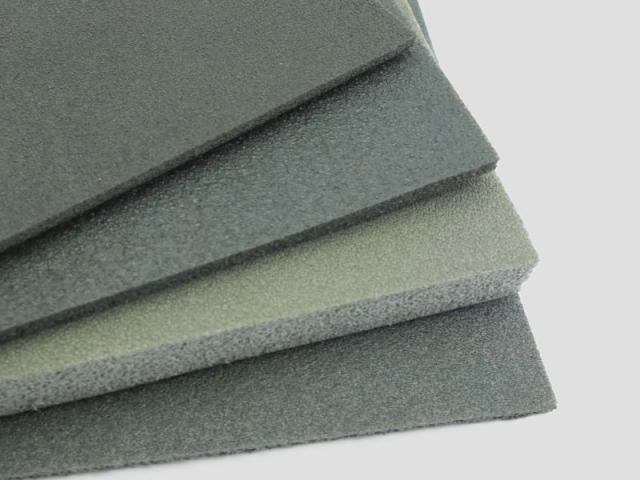Foamed material is a lightweight, porous material made by introducing a large number of bubbles (i.e., forming a closed or open pore structure) into the interior of the material by physical or chemical means. These bubbles are uniformly distributed in the matrix material, which significantly reduces the density of the material while giving it unique physical and mechanical properties. The matrix of the foamed material can be a polymer (e.g., polyurethane, polystyrene, polyethylene, etc.), a metal (e.g., aluminum, magnesium alloy), a ceramic, or other inorganic material.
Features
Foamed materials have a variety of excellent properties due to their unique porous structure, and the following are their main characteristics:
- Lightweight The density of foamed materials is usually low due to the large number of air bubbles contained within the material, which are high in volume percentage but light in mass. This characteristic makes it excellent in application scenarios where weight reduction is required.
- Thermal insulation The air bubbles inside the foamed material effectively block the transfer of heat and therefore provide good thermal insulation. This feature makes it widely used in thermal insulation and cold storage applications.
- sound absorption and insulation properties The porous structure of the foamed material absorbs sound energy and reduces sound reflection, thus providing good sound absorption and insulation.
- Cushioning and shock absorption properties Foam material has a certain degree of elasticity and flexibility, which can absorb impact energy and play the role of cushioning and shock absorption. This makes it ideal for packaging, transportation and protection.
- Corrosion resistance and chemical stability Certain foamed materials (such as polyurethane, polystyrene) have good chemical resistance, and can remain stable in acid and alkali environments.
- Processability Foamed materials are easy to cut, mold and process, and can meet the needs of different application scenarios.
- Environmental friendliness (some materials) With the development of green technology, some foamed materials (e.g. bio-based foamed materials) are biodegradable or recyclable and environmentally friendly.
Applications
Foam materials are used in a wide range of applications due to their excellent properties. The following are its main application areas:
- Construction and thermal insulation field
- Wall insulation: Polystyrene foam (EPS), extruded polystyrene foam (XPS), etc. are widely used in the exterior wall insulation system of buildings to improve the energy-saving performance of buildings.
- Roof insulation: Foam can be used for roof insulation to reduce the rise of indoor temperature in summer.
- Floor and underfloor heating systems: Foam is used as an underfloor insulation layer to improve the thermal efficiency of underfloor heating systems.
- Packaging and Transportation
- Buffer packaging: polyurethane foam, polyethylene foam, etc. are commonly used in the packaging of electronic equipment, precision instruments, fragile products, etc., to protect the products from shocks and vibrations. ii.
- Cold chain logistics: Foaming materials (such as polyurethane foam boxes) are used for insulation packaging in cold chain transportation of food and medicine.
- Automobile and transportation field
- Automotive interior: Foam is used in parts such as seats, dashboards, door panels, etc. to provide comfort and vibration damping. ii.
- Lightweight design: metal foamed materials (such as aluminum foam) are used in the manufacture of automobile bodies and parts, which help reduce vehicle weight and improve fuel efficiency.
- Sound insulation and noise reduction: Foamed materials are used in automobile sound insulation mats, engine hoods, and other parts to reduce noise inside the car.
- Aerospace
- Lightweight structural materials: metal foam is used in the manufacture of structural parts for airplanes and spacecraft due to its high strength and low density characteristics. ii.
- Thermal insulation and fire prevention: Foamed materials are used as heat insulation layer and fire prevention barrier in aviation and spacecraft.
- Medical and Health Care
- Medical cushioning: Polyurethane foam is used in the manufacture of mattresses, cushions, etc. to provide comfortable support and pressure relief. ii.
- Disposables: Foam is used in the manufacture of medical gloves, surgical pads and other disposable hygiene products.
- Sports and leisure field
- Sports equipment: Foamed materials are used to make running shoe midsoles, protective gears, yoga mats, etc., providing comfort and protection.
- Aquatic products: Foamed materials are used for buoyancy devices, life jackets and other water sports

